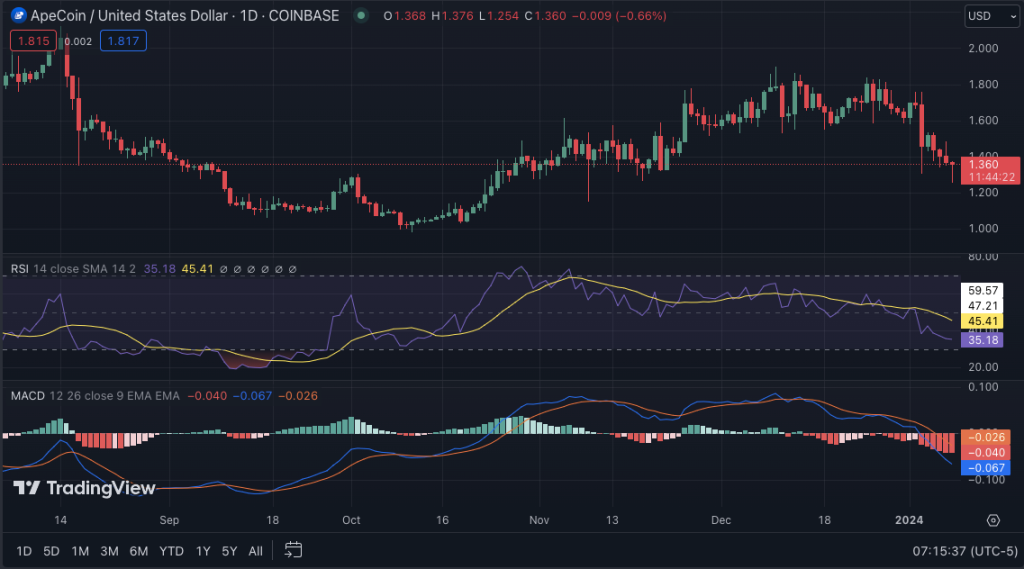
Apecoin, a cryptocurrency closely linked with the Bored Ape Yacht Club (BAYC) NFT collection, is approaching a critical juncture. The crypto community is gearing up for a significant event – the release of approximately 15.6 million Apecoin tokens- on January 17, 2024. This event is part of a series of monthly unlocks, each introducing a substantial number of tokens into the market.
Historically, these token releases have exerted a noticeable impact on Apecoin’s market value. For instance, there were notable price declines on September 22 and March 22, 2023 coinciding with previous unlocks. Despite the broader crypto market showing signs of an uptrend, the NFT sector, including prominent players like BAYC, has been experiencing a persistent decline. This trend raises concerns about the stability and future of Apecoin, especially considering its intertwined relationship with BAYC.
The connection between BAYC’s market performance and Apecoin’s value is hard to overlook. BAYC’s utility and exclusive perks largely depend on the governance decisions of the ApeCoin DAO, which in turn influences Apecoin’s attractiveness to investors. A year-over-year comparison illustrates this interdependence. In January 2023, BAYC was valued at around 70 ETH and Apecoin at $5, whereas, in January 2024, their values dropped to approximately 20 ETH and $1.6 respectively.
With the Apecoin community and external observers closely monitoring these dynamics, the upcoming token unlock is poised to be a significant market event. The prevailing sentiment is one of caution, as Apecoin’s market behavior in the next few months could be pivotal for its long-term trajectory.
At present, Apecoin’s market position appears challenged. Trading at $1.33, the altcoin reflects a 7.24% decrease over the past 24 hours. This downward trend is further emphasized by its market capitalization falling to $490 million, placing it at rank 106. The 24-hour trading volume, however, shows a 30% increase, currently at $74 million.

Technical indicators further support this bearish outlook. The moving average on the 4-hour chart has declined, with 50-MA and 100-MA trending downwards. The Relative Strength Index (RSI), at 35, hovers in neutral territory, but a continued bearish grip could push it into the oversold region. Moreover, the moving average convergence and divergence (MACD) line has crossed below the signal line, indicating a bearish crossover.














